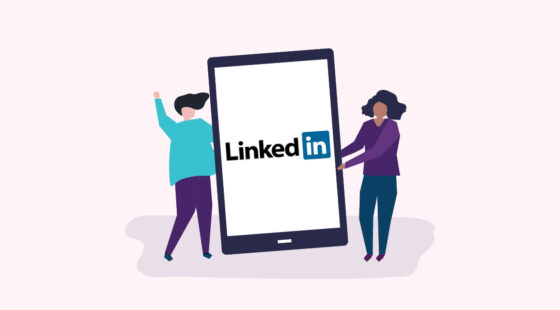Writers at Women in the Boardroom had the opportunity to interview some WIB members to gain insight into their personal and professional experiences and knowledge about antiracism, diversity and inclusion, and equity in the boardroom and corporate settings. We wanted to learn more about what efforts they and their organizations are making to effect change for women and men of color within these organizations and/or how they’ve perceived these changes as women of color.
 This week we spoke with Deb Elam, the President & CEO of Corporate Playbook™ and Founder of Dining With Deb™. Corporate Playbook™ provides leaders and organizations with strategic direction to elevate diversity, inclusion, philanthropy and culture in the workplace. Dining With Deb™ is an innovative dining experience that brings together professional women across racial, religious and political lines to drive meaningful connections and conversations.
This week we spoke with Deb Elam, the President & CEO of Corporate Playbook™ and Founder of Dining With Deb™. Corporate Playbook™ provides leaders and organizations with strategic direction to elevate diversity, inclusion, philanthropy and culture in the workplace. Dining With Deb™ is an innovative dining experience that brings together professional women across racial, religious and political lines to drive meaningful connections and conversations.
For 30 years Deb has been a leader and driving force in the world of Diversity & Inclusion; she is one of the country’s foremost experts in the field. Her previous roles include President, GE Foundation; Chief Diversity Officer, GE; Managing Director Human Resources, GE Commercial Finance; Managing Director Human Resources, GE Capital Markets Services; Senior Vice President Human Resources, GE Capital Insurance Services; Vice President Human Resources, GE Capital Mortgage Corporation; Human Resources Manager, GE Consulting and Information Services; and Human Resources Leadership Program (Rotational Assignments).
What is your definition of diversity, inclusion, and equity and how or why do you think diversity is important?
Diversity is appreciating difference. Inclusion is making people feel like they belong. People want to belong and feel welcomed. Equity and equality can, oftentimes, be confused. Finally, equality is by definition “the same”, I am treating you the same. And finally, equity means I am ensuring your opportunity for success is appropriate and it works. Let’s take gardening for example; You could have all tulips in your garden that are all yellow tulips. And that certainly looks lovely but what would be better would be to have pink, yellow, and red tulips, providing a more enhanced view. What might be even better than just having these tulips would be to have tulips, roses, gardenias, and sunflowers. Now, you’ve got a real symphony, a real landscape of flowers. So, the leverage you’ve provided yourself with is that some of those flowers bloom earlier than others, so you will always have a flower providing color to your landscape.
Diversity is having the different flowers. Now, if you’re a good gardener, you know that each one of those flowers requires different sunlight, nutrients, and different amounts of water every day. So, if you’re providing equality, you’re giving each one of those flowers the same nutrients, the same sunlight, and the same amount of water. That’s going to cause some flowers to thrive and some to die. Equity is ensuring they each get exactly what they need to thrive.
Why is a commitment to diversity beneficial to an organization, company, or board?
Diversity breeds innovation. Increasing diversity allows corporations to be more effective in how they do business because of the input by a wider variety of stakeholders. So, even a business that’s doing well could always be doing better by increasing diversity.
How can organizations and boards work to increase diversity?
Well, there are a lot of creative ways to recruit. A great way to increase diversity is to reach out to your current network of employees of color and encourage them to share job opportunities with their network and ask them where they see value in advertising and recruiting. You absolutely have to change the way in which you’re recruiting or you’re going to continue to get the same applicants. You must cast a wider net.
What can individuals do right now to become better allies?
We are all biased, and bias is how we are socialized and how we consume media that informs what our perspective is on something, someone, or some group of people. Issues start to arise when unconscious bias comes in: These are attitudes or stereotypes that impact your actions or decisions unconsciously. Unconscious bias can actually run afoul of what your espoused believes are. So, what I mean by that is that you’re not realizing how you behave. So, you need to check yourself on these biases, understand why you hold those biases and ensure that you’re not acting on them.
What does it mean to you to see others illustrate a commitment to diversity and antiracism?
No one wants to go someplace where they are simply tolerated. We spend a lot of hours in the workplace, so people want to feel like they are contributing and like they’re valued. You need to enable all people to be authentically themselves through positive reinforcement and signaling. You acknowledge and praise them for their authenticity by incenting those behaviors, letting them know their authenticity is valued. It’s about walking towards the talk.
What advice would you give to boards/corporate leaders to actively engage in antiracism consistently and moving forward?
If you want the culture to change, you’ve got to report it, especially if it’s creating a hostile work environment or it’s illegal. Unfortunately, most people leave a workplace because they’re afraid to take on the system. I understand that some people will not have the strength to do this, and it’s unfortunate because companies lose quality employees because of this. One thing everyone can do is to not collude. Colluding is very powerful. Don’t go along with it if someone is saying something off-color or inappropriate. In a workplace, everyone should be held to a standard of conduct. Most of this is not easy because it’s leaning into discomfort and having conversations we’ve never had.
What do you feel is a mistake in organizations thinking about diversity?
Being authentic about their messaging and approaches to diversity, inclusions, antiracism, equity and equality. People can see right through inauthentic messaging and action.
How can organizations promote real change when it comes to diversity, inclusion, and antiracism and end the performative and “feel good” allyship that’s been the standard?
They’ve got to start viewing diversity as a benefit. What I’ve learned post Trayvon Martin is that many of the white people that I worked with at the time, believed that things being alleged, or they saw happening with the police, believed they were happening to people across town, on television, or somewhere else. They were certain that they didn’t actually know anyone who endured this type of abuse or overt racism and that it couldn’t possibly be anyone they were on a conference call with two hours ago. They believe it’s some other group of black people somewhere else.
So, one way to combat these ideas of “otherness” is to have people within the organization share their own experiences. I’ve learned that really shifts the narrative in people’s head, helping them to realize these issues aren’t removed from them. Facilitating these kinds of conversations in a safe and affirming way, in my experience, really brings it home for people and it becomes more personalized, hopefully inspiring individuals to not sit on the sidelines and to do something about it.
What does it take for a company to be authentic when it comes to being antiracist?
Continue the conversation and systematize the conversation. So, for example, one organization I know of has launched a book club on race relation and diversity and inclusion. It’s a very diverse book club in terms of race and gender. You can also launch a discussion series and invite speakers to come and talk with your employees, staff, and leadership.






